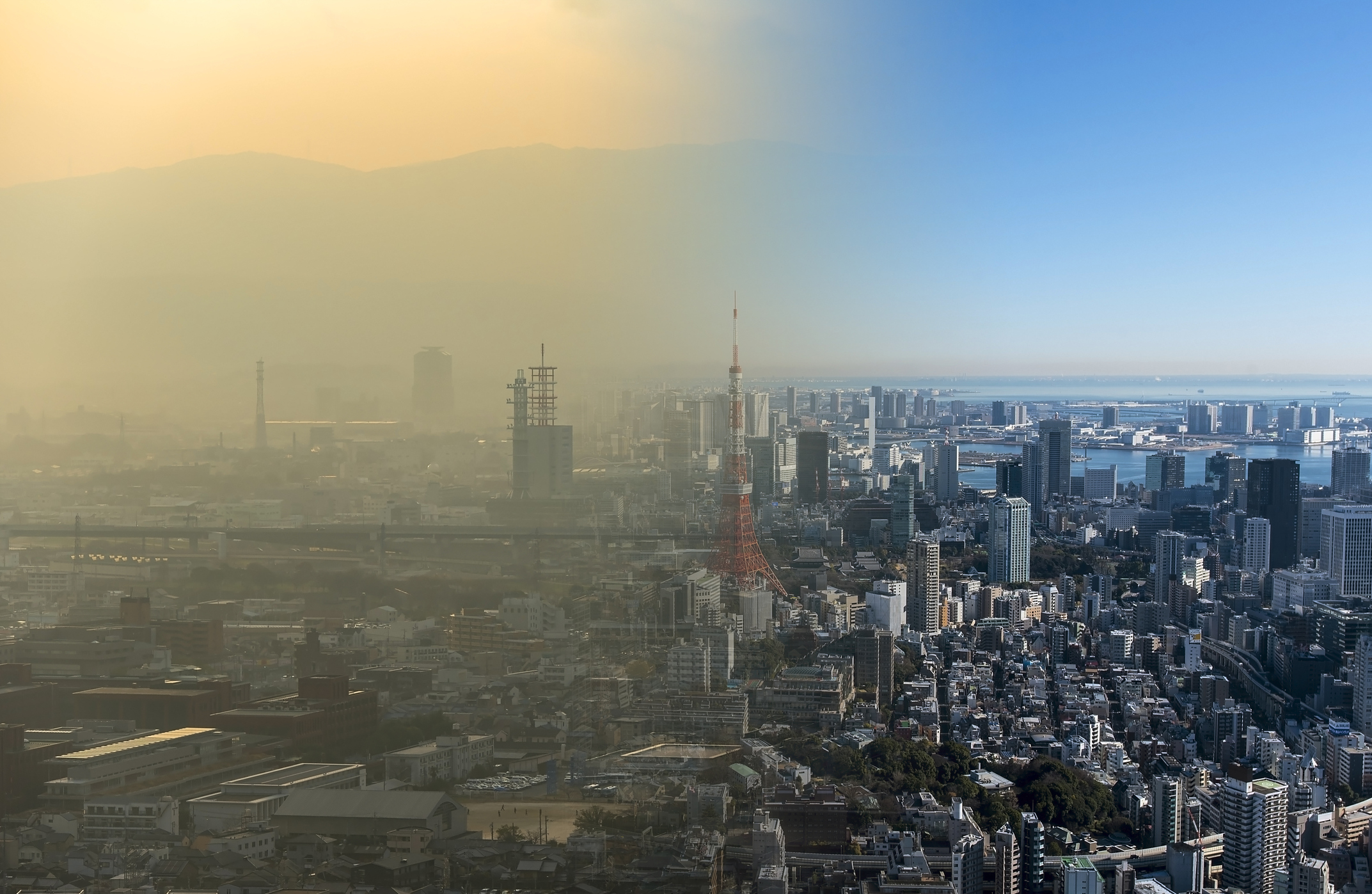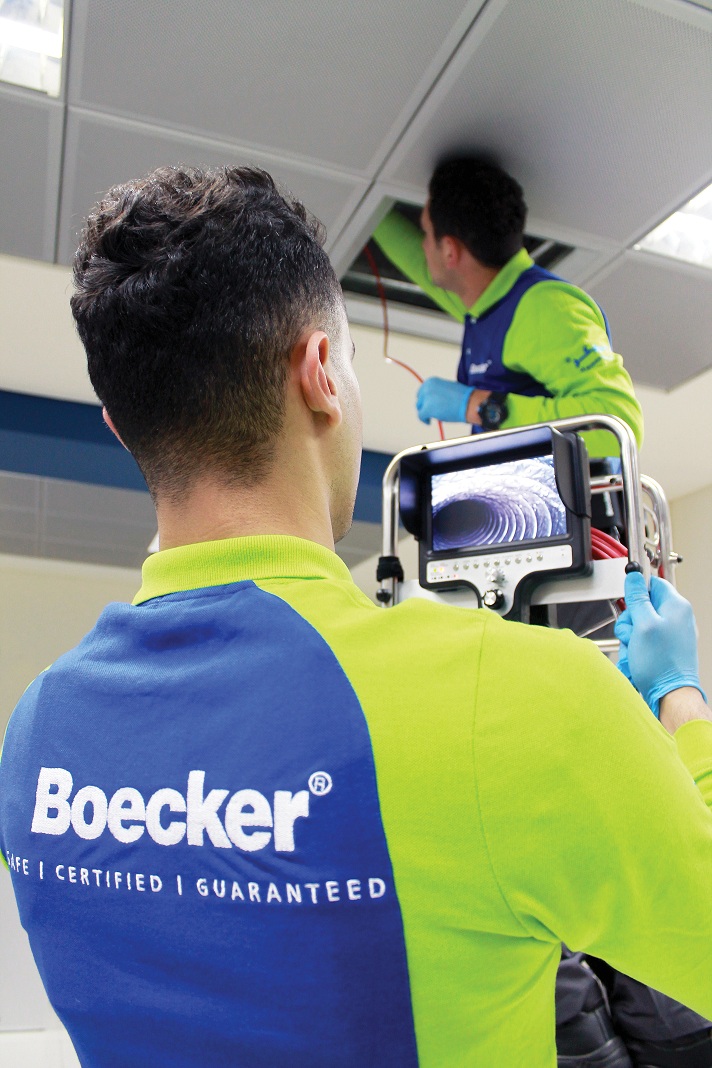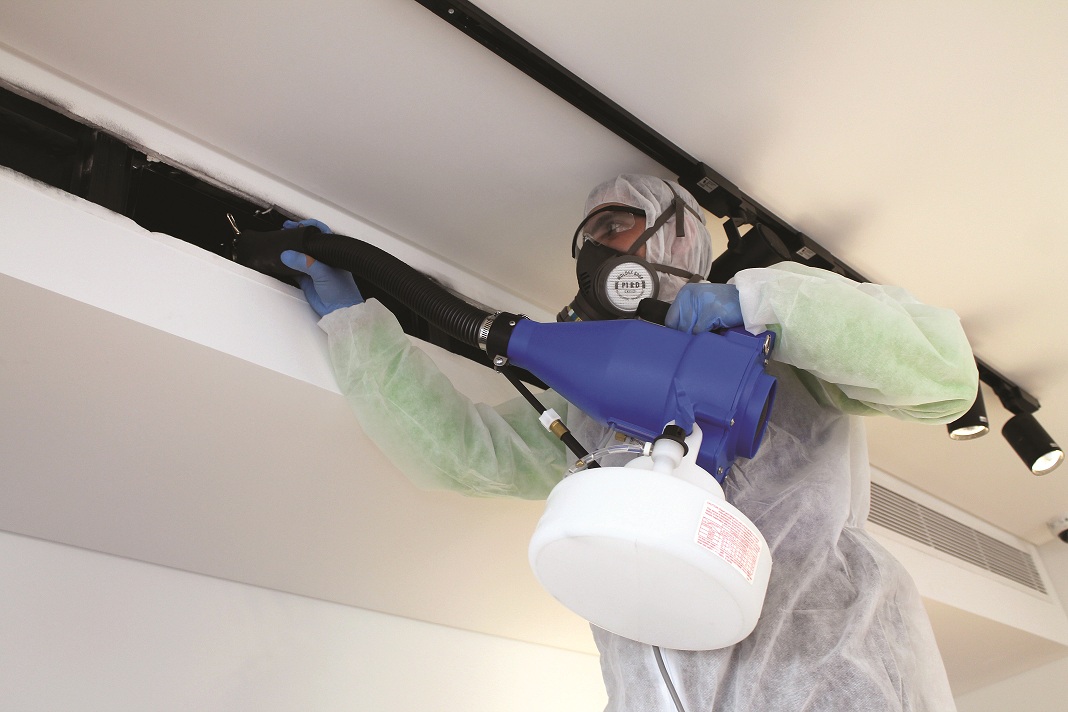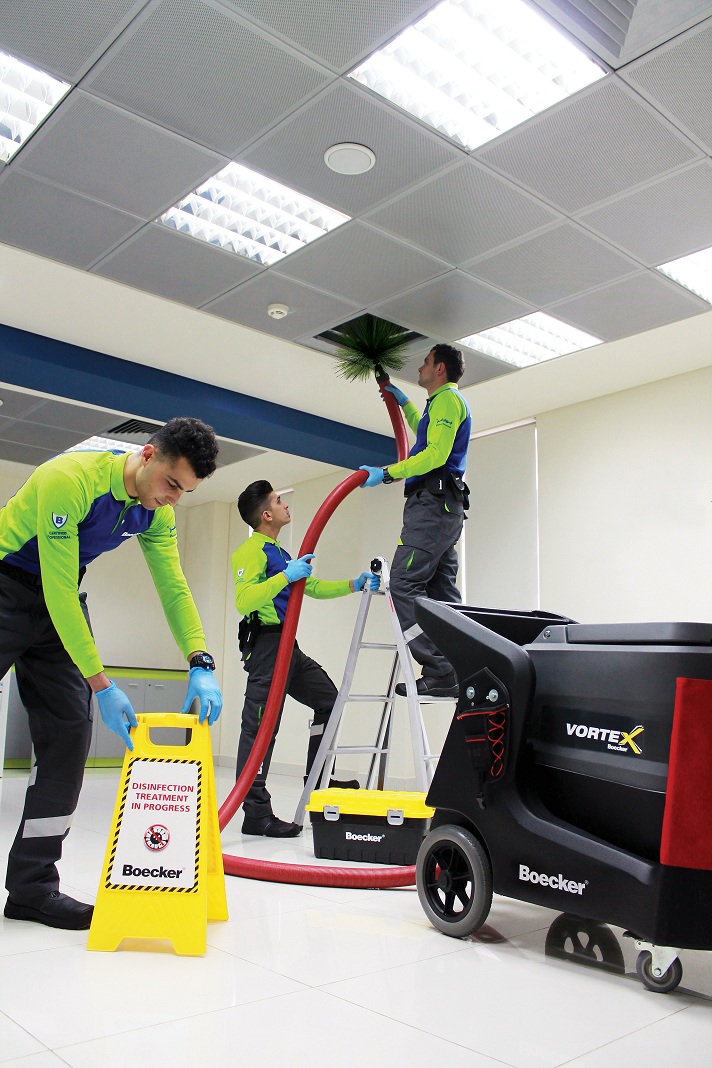Any owner, operator or employee at a hotel or restaurant will tell you that the associated elements to ensure an optimally hygiene-friendly hospitality environment, are staggering. These generally depend on two main factors – machines and the best practices system(s) instituted by the operators.


Overview
These are based on three features associated with running a hotel, namely, the HVAC system (Heating Ventilation and Air Conditioning), the HACCP system (Hazard Analysis and Critical Control Points) a systematic approach to identifying, evaluating, and controlling food safety hazards and ICP (Infection Control Plan), a system designed to target hard-to-reach areas and surfaces, which harbor germs and become a hidden contamination source.
The first, ensures that guests are afforded the ability to control the climate of their indoor environment, while the other two are safeguards that ensure all offered consumables and the space they are served in are healthy and contagion-free. While there have been many advances in the development of more powerful and efficient germ-eliminating techniques, machines and chemicals, a significant number of people, till this day, remain unaware of how important IAQ (Indoor Air Quality) really is. That however is not the challenge, rather maintaining air within the ‘safe to breath’ parameters is. In general, the optimal range of oxygen in the air should be between 19.5 and 23.5 percent as stipulated by OSHA (Occupational Safety and Health Administration). In approximately 500 indoor air quality investigations conducted by OSHA in the last decade, the National Institute for Occupational Safety and Health (NIOSH) found that the primary sources of indoor air quality problems are, inadequate or improper ventilation (52%), contamination from inside a building (16%), microbes (5%) and fabric (4%).
While these figures may highlight the importance of proper ventilation, it nonetheless does not guarantee safe breathing air. Aside from getting a whiff of pure oxygen from a pressurized tank, the air we freely-breathe contains different kinds of particulates. Some of these can cause mild physical discomfort during short-term exposure, while others can cause chronic and even deadly symptoms over extended periods of time. It therefore becomes instrumental to ascertain the quality of air one is exposed to when it comes to indoor spaces.
This is a reality that today’s health conscious individuals are taking more notice of, considering that people spend about 90 percent of their time indoors (work/home) according to a study by the Environmental Protection Agency (EPA). This is where matters become significantly complicated.
The guidelines
Hospitals have fixed, as well as strict controls to prevent the spread of disease, especially when it comes to the IAQ pumped into operating rooms. While some of these programs are offered by third party providers, some governments also mandate and apply their own oversight systems as an additional safeguard to minimize the result of an accidental outbreak of potentially deadly viruses. Despite the fact that the risk of such an outbreak is significantly-higher in hospitals, nonetheless, any space designed to host hundreds or thousands of people constitutes a potential hotbed to the spread of various types of diseases fatal or otherwise. That is where a hotel’s HVAC system comes into play. Numerous studies have found that purchasing a top-of-the-line system is not nearly enough to guarantee guests the air quality recommended by NIOSH (National Institute for Occupational Safety and Health). It stipulates that microorganisms and other biological contaminants otherwise known as microbials floating freely in the air we breathe include viruses, fungi, mold, bacteria, nematodes, amoeba, pollen, dander, and mites. NIOSH recommends that 250-350 ppm (parts per million) constitute normal outdoor ambient concentrations, 600 ppm will result in mild irritation, while 1,000 ppm indicates inadequate ventilation resulting in headaches, fatigue, as well as eye and throat irritation. This kind of concentration is considered the limit for indoor levels of safe to breathe air quality. SHRAE (Society of Heating, Refrigerating and Air-Conditioning Engineers) in its 62-1989 standard recommends 20 cubic feet per minute (CFM) of outdoor air per occupant for offices and up to 60 CFM for indoor smoking lounges. Air treatment is another factor meant for serious consideration in relation to the removal of air contaminants and/ or the control of room temperature and humidity. Some recommendations include the use of filtration, electronic cleaners, chemical treatment with activated charcoal. Also, ideal humidity control systems should be within the range of 20%-60% and temperature control in the range of 20-24°C. Before delving into the particulates, it would be noteworthy to consider, since running a hotel is a very costly endeavor, that anything that allows an operator to cut costs while maintaining quality is a proposition that merits serious consideration. Based on a study conducted by Enman, an Australian engineering company specializing in energy management for industrial and commercial sectors, a hotel’s HVAC system, is the foremost energy user in the entire structure. As the stars awarded to a facility grows, so does its energy consumption by default in aid of offering guests increased levels of comfort. The study found that HVAC systems in a hotel can use more than 60% of the hotel’s electrical energy consumption. In other words, that single indispensable system, which consumes the biggest amount of energy and requires plenty of maintenance, also happens to be one of the main vehicles carrying harmful elements that directly affect the health of hotel guests in varying degrees.
Potential solutions
Yet, despite the fact that there are plenty of Building Management System (BMS) offering maintenance of HVAC equipment and energy efficiency of the hotel by more than 25 percent, none resolve the problem of improving air quality pumped into guests’ rooms. Also, and while guest satisfaction is the number one priority in the hospitality sector, hotel operators are often hesitant to engage in activities that could be perceived as reducing comfort, convenience, or the overall brand experience. Nonetheless, energy represents the single fastestgrowing operating cost in the lodging industry, stated ENERGY STAR®, the American government-backed symbol for energy efficiency.
An EPA spokesperson confirmed that, “The EPA does not have regulations pertaining to heating, ventilation and air conditioning systems in hotels. Furthermore, the agency does not have the authority to develop indoor air quality regulations. However, the EPA will continue to work within its authority to provide the best possible guidance for improving indoor air quality.” Furthermore, according to findings made available to the public by the EPA, high temperature and humidity levels can also increase concentrations of some pollutants, which could include, deteriorated asbestos-containing insulation, newly installed flooring, upholstery or carpet, cabinetry or furniture made of certain pressed wood products, cleaning products, central heating/ cooling systems and humidification devices. Consequently, looking at a facility holistically and from different angles allows facility managers to put multiple safeguards in place to minimize the probability an IAQ issue will develop.
Unfortunately, an often overlooked element in the prevention of IAQ issues is the proper design and installation of HVAC systems. Two significant considerations for a manager during any project, especially those involving HVAC projects, is time and money. The overemphasis on these items particularly at the design stage can result in long-term problems that often consume more time and cost more money in the long run.
Though common sense dictates that the more luxurious a hotel is, the better the services and amenities offered are, especially when it comes to hygiene, another surprising fact revealed itself. Contrary to popular belief, According to Jeff Dryfhout, global director of marketing and air treatment for AeraMax Professional, a company that helps wellness caretakers to address air concerns stated in a feature posted in LODGING, the official publication of the American Hotel and Lodging Association (AHLA) that, “Hotels, in particular, deal with a wide range of potential IAQ problems. Odors are one of the most common complaints and can quickly have a negative effect on overall customer satisfaction. Airborne germs are another major risk in high-traffic areas, as research shows that one sneeze or cough can expel pathogens into the air for extended periods of time. For example, the flu is most commonly spread through the air rather than by surfaces or touch. Other pollutants such as dust, mold spores, pollen, and other allergens can also remain airborne for long durations, triggering allergies and asthma when inhaled. Together, these contaminants can make a room unsuitable for those with chronic respiratory conditions.”
A report by the Hong Kong Polytechnic University titled, ‘Guide to the Management of Indoor Air Quality for Hotels’, states that, “Good IAQ depends on an adequate supply of fresh air, absence of polluting sources, and good distribution to the breathing zone of the occupied spaces. The Indoor Air Quality Management Group of the Government of the Hong Kong Special Administrative Region released the second draft emphasizing the need to specify the objectives of indoor air quality (IAQ) deemed to be achieved in public buildings. Although this requirement is voluntarily, the management of indoor air quality in hotels should be taken seriously for two strategic reasons. Firstly, there is no reason why hotels can be exempted from regulatory control of the IAQ. Secondly, quality buildings are likely expected to meet the most stringent Level 1 requirements of the Guidance Notes through a certification procedure administered by EPD.”
Interpreting the facts
The alarming levels of pollutants in China’s air have raised very serious concerns, especially for the hospitality industry driving luxury hotels to take notice. A 2018 feature by The Guardian titled, ‘How clean indoor air is becoming China’s latest luxury must-have’, revealed that, “Shanghai’s latest upscale hotel boasts filtered air typically 10 times cleaner than that outside and in-room pollution monitors.” The newly opened luxury Cordis hotel in Shanghai, in addition to the services and amenities offered, has taken matters a step further to lure-in customers by fitting individual pollution monitors in all 396 guest rooms indicating in real-time air quality through the TV screen. “I think people can sleep easier knowing that the air quality in their room is far superior to any other hotel and far superior to what it is outside,” said John O’Shea, managing director of Cordis Hongqiao. Guests have so far rated the Shanghai hotel highest for satisfaction out of the Langham Groupowned brand’s 22-hotel portfolio. However, that case is a rare exception, which will in all probability become a global trend for hotels to capitalize one. Yet the absence of a single hotel rating system has further compounded the creation and implementation of IAQ regulations. Nonetheless, there are a few highly recognized hotel star rating systems set by reputed organisations such as the British Automobile Association (AA) founded in 1905, the American Automobile Association (AAA), which is the most popular star rating association in North America and HOTREC (Hotels, Restaurants, Pubs and Cafes) combining 44 European national member associations to date. Some interesting rating systems have been used in various countries and have proven their worth. The Swiss hotel rating by hotelleriesuisse was the first nongovernment formal hotel classification beginning in 1979. Another system is DEHOGA (German Hotel and Restaurant Association), which was launched in 1996 and proved so successful that it influenced the creation of a common European Hotel stars rating system in 2010. In France, the rating is defined by the public tourist board Atout France using a five-star system, while hotels in India are classified by Hotel and Restaurant Association Classification Committee (HRACC), Ministry of Tourism, India. These rating systems, which are credible sources in the country the establishment(s) operate in, communicate and promote the quality offered to guests. Again, and due to the absence of a single global rating system, emphasis on hygiene will vary and even prove tricky at times irrespective how high or low these establishments measure. A 2019 report title ‘Hotel Hygiene Exposed’ by Travelmath, a website that companies like United Airlines, Southwest Airlines, and Ryanair use to re-route passengers and plan new flight paths, as well as reports on the dirtiest places travelers unearthed some startling facts. Some of the findings related to how bacteria-laden hotel rooms are found that, “The average hotel room appears to be dirtier than a typical home, an airplane and even a school. We assessed bacteria levels in colony-forming units (CFUs) – the number of viable bacteria cells within a sample. Interestingly, the three-star hotels appear the least germ-ridden. For instance, the dirtiest surface in a three-star hotel room, was the bathroom counter, which was around eight times less dirty than a four-star hotel room and three times less than a five-star hotel room. Among our five-star hotels, the remote control was the most germ-ridden surface. In our four-star hotels, the bathroom counter was the most bacteria-laden surface and in the three-star hotels, the bathroom counter was the dirtiest.”
“The EPA does not have regulations pertaining to heating, ventilation and air conditioning systems in hotels. Furthermore, the agency does not have the authority to develop indoor air quality regulations”
“The average hotel room appears to be dirtier than a typical home, an airplane and even a school. We assessed bacteria levels in colony-forming units (CFUs) – the number of viable bacteria cells within a sample. Interestingly, the three-star hotels appear the least germ-ridden”
To address this complex issue, HN talked with Bana Kobrosly, Country Manager for Lebanon, Boecker Public Health, the Middle East’s largest pest management, food safety and germ control world class services provider. It also is a member at ASHRAE, American Society of Heating, Refrigeration and Air conditioning Engineers: the largest and most influential HVAC/R organization.
Before delving into the solution that Boecker began offering less than two years ago, she remarked that, “According to the EPA, indoor levels of pollutants may be two to five times higher than outdoor levels. Hence, Indoor Air Quality (IAQ) was ranked among the top 5 environmental risks to the public. This reality becomes of major concern when you consider that hotels can host a multitude of germs checked in by clients from around the globe, which makes general sanitation and disinfection essential to avoid the spread of infections between room occupants or tenants.”
The relatively new service was not under the company’s radar had it not been for a telephone call Kobrosly received from a man she did not know inquiring about a solution to a problem she did not offer. “The man on the other end of the line explained that he was a lab technician struggling with a serious problem directly related to the results of the hospital samples he was responsible for testing. After exhausting all possible factors that could have caused serious errors, he concluded that pathogens were directly introduced into his laboratory through the facility’s main ventilation system. His inquiry was to ascertain whether or not we offered a service that could resolve that life-threatening problem, which at that time, we did not. This drove us to investigate potential solutions we could introduce to our roster of available services, which was when the idea of the Vortex™ service was conceived.”
Ironically, and as individuals grow more health conscious, air quality is rarely, if ever mentioned. However, the incident described by the local hospital technician is a stark reminder of the real hazards air quality has on our short and long term health. Boecker®, which has become a leading health service provider, was seriously alarmed and after extensive research and development, introduced the new AC ducts cleaning and sanitizing service. Explaining what happened after that call, she continued, “Reference to our experience in biosecurity and infectious control systems, we nonetheless investigated the hospital’s ventilation system at the technician’s lab to find that it was infested with a type of fungus, which it was pumping into the lab at alarming levels.”
After building this new service, Boecker began offering the Vortex™ service, allowing companies to scan, locate and eradicating all harmful pathogens irrespective how difficult these may be to physically access. This, in part, is due to the equipment used and the training the system’s operators undergo to make full use of the tools at their disposal. This procedure is a meticulous journey that involves a recorded before and after results registered through a miniature camera system that inspects inside the air ducts for live monitoring using the highest technological features. During the service, specialized tools are used, which are appropriate for different types of duct systems and will remove all build up materials such as dust and residues. The process ends of with a state of the art disinfection technique that will reduce and hinder all kinds of bacteria, viruses, mold and fungus from multiplying.
Lastly, the ventilation system is retested to ensure that the IAQ is within the normal range based on international standards set by the EPA, which is then followed by a regular-scheduled inspection program set to ensure continued integrity. The product we use in our Vortex™ service is a registered EPA disinfectant and certified as 100% safe. It is a type of molecule specially designed to aggressively attack and rupture the membrane of all harmful microorganisms within seconds of contact without exhibiting any kind of resistance.
In relation to the entities who have requested the Vortex™ service, Kobrosly revealed, “These include a surprising
number of hotels, hospitals and food manufacturing plants. In relation to hotels, demand for this type of service is increasing for a number of reasons. The first being that the longer a room’s ventilation system is not turned on, the chances of contaminants developing and multiplying is much higher as both heat and humidity offer ideal environments for such growth. The prefect example to that effect is the musty air smell a hotel room’s ventilation system has that even overpowers the fragrances of a freshly-cleaned room. Therefore, we have received, since launching the service, a number of requests from hotels related to the cleaning of specific floors that are often unoccupied for extended periods of time.”
In relation to the challenges encountered, she remarked that raising awareness and in some instances demonstrating the added value such a service has on the brand’s bottom line as well as the improved experience people will benefit from, has been tricky. However, and though the system will have significantly boosted the quality of air and in turn protected the person(s) health, it will not really make a mark on these individuals due to the limited time spent in the indoor environment, which will not allow them to feel the difference. Nonetheless, with the Vortex™ service, any hotel guest will immediately feel a level of freshness every time he/she turns on the AC system irrespective of the period spent in the room.
Elaborating, she said, “However, I have no doubt, if the same hotel guest were to spend a single night in a room with an untreated HVAC system then switch to another that is treated, the difference will be felt. Furthermore, to prove to hotel operators of the difference, are the tools we have that measure the IAQ before and after treatment for more tangible and actionable results. This kind of service, could also be promoted to guests by in-room certificates and possibly, in the future, even real-time digital IAQ monitors.”
Another major factor to consider, when I have no doubt, if the same hotel guest were to spend a single night in a room with an untreated HVAC system then switch to another that is treated, the difference will be felt it comes to reducing overhead costs associated with running any kind of hotel, is ensuring that the HVAC system is running at optimal levels. What is unknown to many operators, is the fact that any system that requires maintenance, will consume more power to deliver the same result. Therefore, the duct system that may be clogged or in need of cleaning, is operating at overcapacity and therefore consuming more unnecessary power driving overheads higher than usual. This is mainly due to the restriction imposed by the chemical buildup and trace residues impeding unhindered airflow.
Lastly, there are still hotels that offer guests the option of smoking rooms. What most guests are unaware of is that the smoke eventually builds-up inside the ventilation system and remains there if not properly cleaned. It will also result in foul air quality and physical irritations, especially for people with allergies and sensitive skin. Since its introduction, company representatives have visited many hotels to introduce the Vortex™ service.
Concluding, Kobrosly said, “It is important to note that the number of private residences asking for this service is equal to if not more than hospitals, hotels, offices and food manufacturers. One reason is because people living in a certain residence will notice the difference, especially individuals who suffer from allergies and have breathing problems. Another noteworthy matter to consider is that we offered the service to offices that have windows, which are designed not to open, making the integrity of the ventilation system a major priority.”
In relation to offering the Vortex™ service to regional countries, Boecker is introducing it and has already signed an account for a huge project in Qatar, as well as completed projects on a number of mixed-type projects in KSA and Kuwait.

Bana Kobrosly,
Country Manager for Lebanon,
Boecker Public Health
“After plenty of research, Boecker began offering ‘The Vortex System’, which allows the company to scan, locate and eradicating all harmful pathogens irrespective how difficult these may be to physically access”
“I have no doubt, if the same hotel guest were to spend a single night in a room with an untreated HVAC system then switch to another that is treated, the difference will be felt”
















